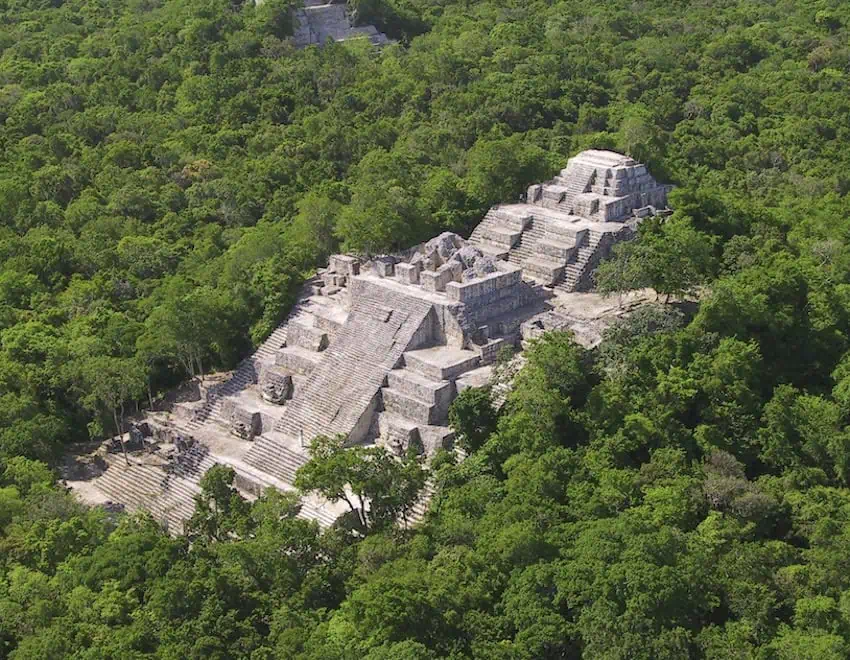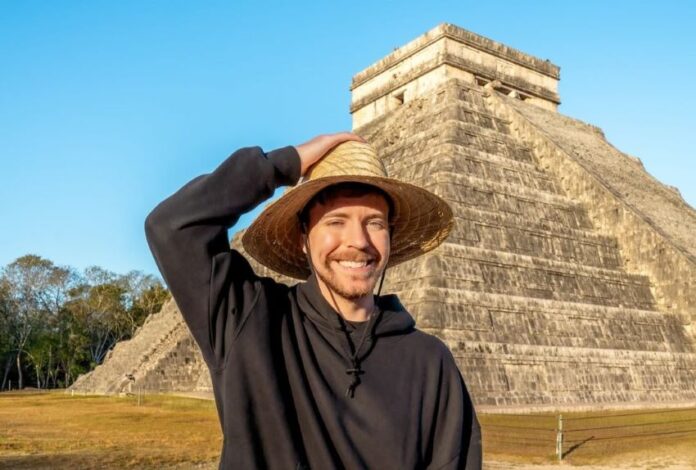YouTube megastar MrBeast is facing scrutiny from Mexican authorities and outrage from the public over his recent video filmed at the protected archaeological sites Chichén Itzá and Calakmul.
Officials have accused the highly successful content creator of producing misleading theatrics while defending the legality of his permits.

Kansas-born Jimmy Donaldson, 27, known as MrBeast, has approximately 394 million YouTube subscribers — more than anyone else in the world, and that includes YouTube channels for entertainers, celebrities and corporations.
He’s famed for high-budget stunts, philanthropy and viral challenges like a real-life Squid Game — and even for launching MrBeast Burgers in Mexico City in 2023 (now with 36 locations throughout Mexico).
Smashed cheeseburgers and Beast-style fries aside, his May 10 video “I Survived 100 Hours In An Ancient Temple” has amassed more than 55.7 million views in four days.
But it has also drawn fierce criticism for showcasing restricted areas at a pair of UNESCO World Heritage sites: Chichén Itzá in the state of Yucatán and Calakmul in Campeche.
Mexico’s National Institute of Anthropology and History (INAH) confirmed Donaldson obtained permits through the federal Tourism Ministry and state governments, and that his filming was supervised by staff to “ensure no damage to heritage.”
However, the institute criticized the video’s “distorted information” and “theatricality,” clarifying that key scenes were fabricated.
One of those scenes was a drone purportedly flying inside the temple chamber atop Kukulkán, a pyramid also known as El Castillo that was illegally scaled by two tourists in March.
Toward the end of his video, MrBeast says, “What secrets lay in that ancient room? Out of respect for the culture and all the people who hold this very sacred, we are not going to touch the temple. Instead, we’re going to fly this drone up to see what’s in that room.”
However, in a press release titled “YouTuber Mr. Beast’s visit to heritage sites was carried out in compliance with INAH regulations,” INAH contends this did not happen because the drone was flown only outside of the chamber.
“The video includes extensive audiovisual post-production work and alludes to events that did not occur, such as the fact that the producers never descended from a helicopter [onto the top of a pyramid] or spent the night inside the archaeological site,” INAH added.
Another faux scene, according to INAH, included a “pre-Hispanic funerary mask” handed to Donaldson. It was not an artifact, but “clearly a contemporary reproduction,” according to INAH.
In her Wednesday morning press conference, Mexican President Claudia Sheinbaum stated permits were legally granted but ordered a review.
“If the permission was violated, [we will] see what sanctions come,” she said, as quoted by the newspaper Mileno.
Culture Secretary Claudia Curiel de Icaza condemned the video’s often theatrical portrayal of restricted zones and demanded “appropriate sanctions” for undermining heritage sanctity.
INAH Director Diego Prieto emphasized no damage occurred but acknowledged public access protocols were misrepresented.
Social media users accused Mexican authorities of favoritism, noting locals and even researchers face stricter access. Some critics brought up potential corruption, asking, “How much money did he pay?”
Donaldson, whose net worth reportedly exceeds $550 million, began posting gaming videos in 2012 before gaining fame with stunts like counting to 100,000. His philanthropic ventures, including tree-planting initiative #TeamTrees, contrast with criticisms of “charity porn” that exploits poverty for views.
With reports from Milenio, El País, La Jornada and El Financiero
